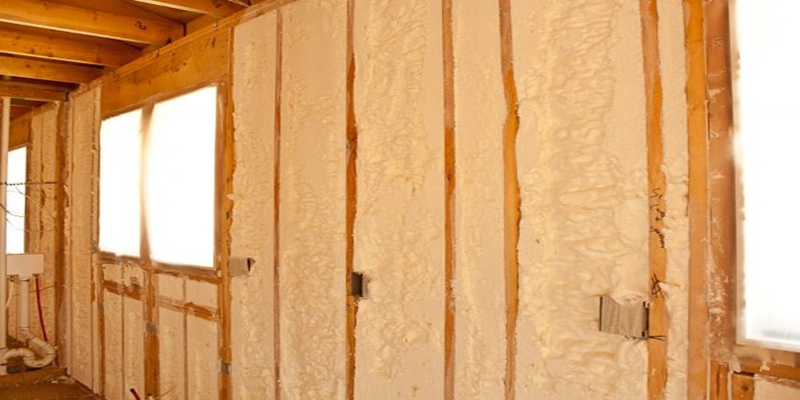Spray Polyurethane Foam (SPF) is a versatile and highly effective material used widely in the construction industry to improve building insulation and seal cracks and crevices. This sprayed plastic forms a continuous insulating and air-sealing barrier on surfaces, significantly enhancing energy efficiency and comfort in buildings.
Composition and Reaction
SPF is created by mixing two primary chemicals that react quickly when combined, expanding to form a foam. This foam acts as a thermal, sealing, and moisture barrier, making it an ideal solution for reducing unwanted air penetration through cracks, joints, and gaps. The chemicals used in SPF systems are typically divided into two components:
- The “A” Side: This usually consists of diphenylmethane diisocyanate (MDI) and polymerized diphenylmethane diisocyanate (pMDI).
- The “B” Side: This is a blend of polyols, catalysts, foaming agents, flame retardants, and surfactants. The catalysts used in the “B” side, such as MXC-C15 and MXC-T, play a crucial role in ensuring the proper reaction and formation of the foam.
Benefits of SPF
SPF insulation is renowned for its excellent resistance to heat transfer. By forming an effective barrier against thermal bridges and air leaks, SPF helps maintain consistent indoor temperatures, leading to significant energy savings. This insulation method is particularly effective in reducing heating and cooling costs, contributing to lower energy consumption and a reduced carbon footprint.
Additionally, SPF’s ability to seal cracks and crevices prevents drafts and moisture infiltration, which can lead to mold growth and structural damage. This makes buildings not only more energy-efficient but also healthier and more durable.
Application and Performance
The application of SPF involves spraying the foam onto surfaces where it expands and hardens, forming a continuous and seamless barrier. This adaptability allows SPF to be used in various areas, including walls, roofs, attics, and basements. Its ability to conform to any shape and adhere to surfaces makes it ideal for insulating irregular or hard-to-reach spaces.
Our company’s polyurethane catalysts, such as MXC-C15 and MXC-T, are integral to the SPF system. These high-quality catalysts ensure a consistent and reliable reaction, resulting in uniform foam formation. We pride ourselves on the consistency and stability of our products, providing a dependable supply to meet the demands of the market.
Conclusion
Spray Polyurethane Foam (SPF) is a superior insulation material that offers numerous benefits, including excellent thermal resistance, air sealing, and moisture barrier properties. Its application in buildings enhances energy efficiency, comfort, and durability. As a supplier of high-quality polyurethane catalysts, we are committed to supporting the SPF industry with reliable and effective solutions. For those seeking to improve their building insulation and efficiency, SPF, supported by our advanced catalyst products, is an optimal choice.
Post time: Jul-23-2024

